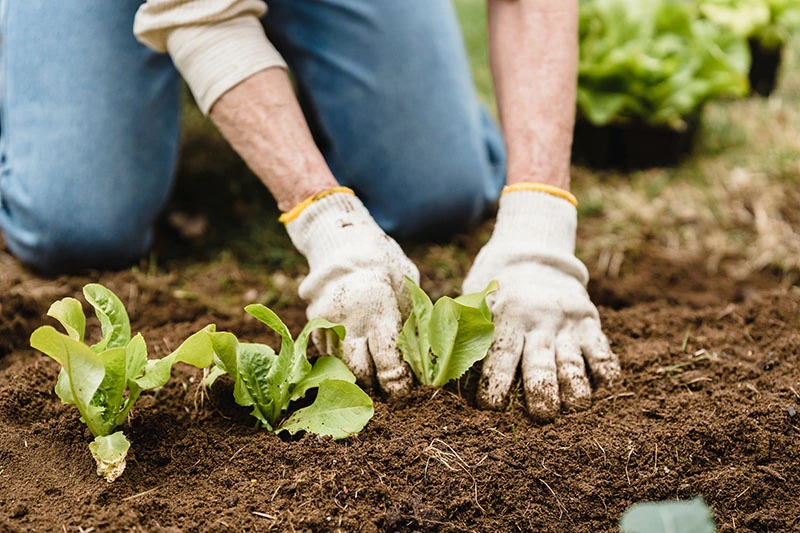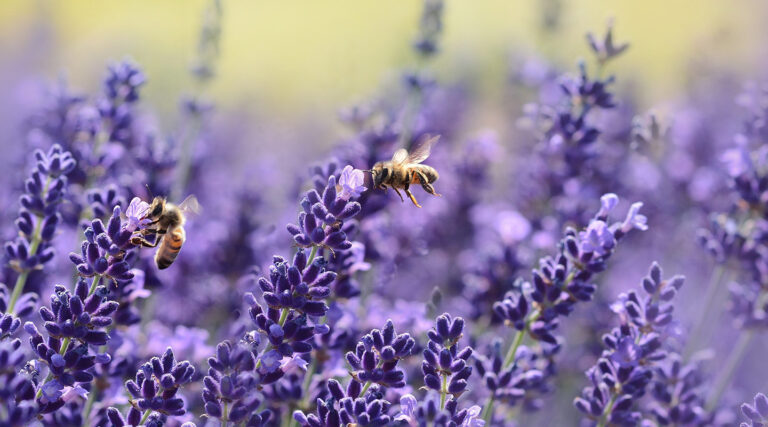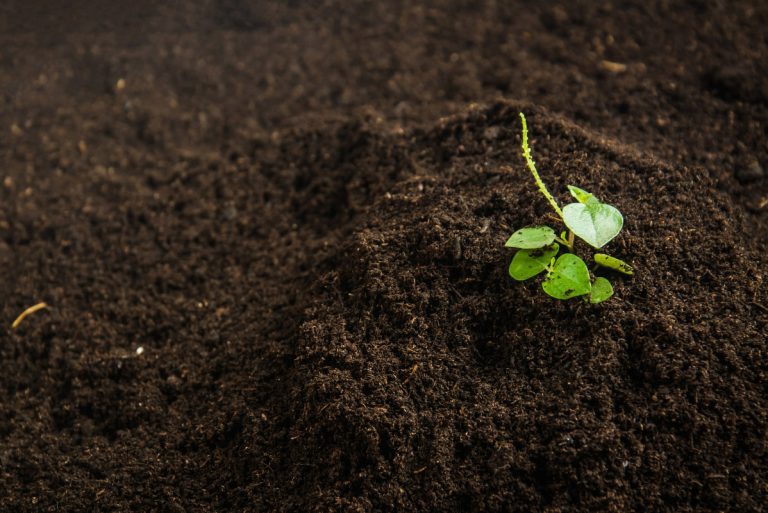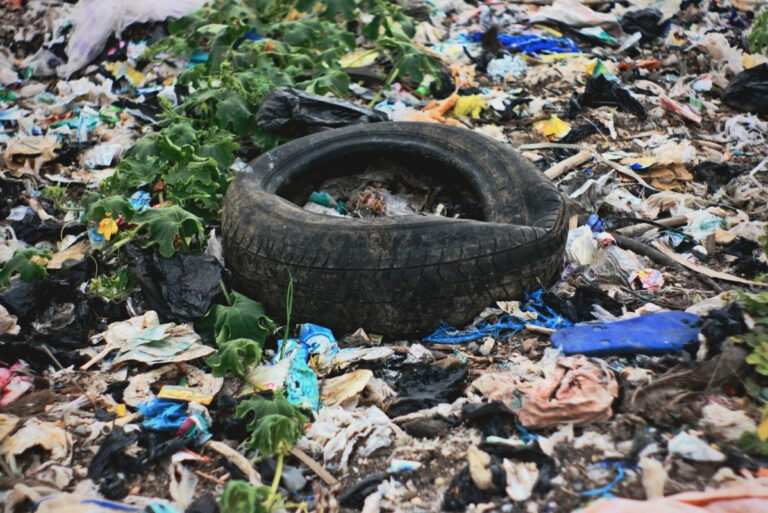According to the Save Soil movement, 52% of the earth’s soil is already dead and if we continue at our current rate, 90% of all soil worldwide will be degraded by 2050. But what does that mean for humanity and the planet we live on? In this guide, we’ll take a closer look at the causes and effects of soil degradation and what we can do to prevent it.
What is soil degradation?
Soil degradation occurs when soil loses value, whether in terms of minerals, organic matter, structure, texture, water retention, or volume, in the case of erosion. Healthy soil is about 25% air and 25% water – the rest is made up of minerals and organic matter – and is home to a complex “soil food web” of microscopic fungi, algae, bacteria, and protozoa, as well as insects, earthworms, and small animals.
“a teaspoon of soil contains more life than there are humans on earth.”
Assistant Professor Christine Sprunger from Michigan State University
There is a wide range of reasons why soil can become degraded (more on this below), and the level of degradation can range from mild to severe when the ground is essentially dead.
People often confuse soil degradation with soil pollution, and while there is some overlap between the two, they are different processes. Soil pollution or contamination is defined as when the ground becomes contaminated with chemicals or toxins to such an extent that it poses a risk to plants, animals, or people.
Therefore, soil pollution is essentially a form of soil degradation, while there are also other ways that soil can become degraded. Read more about soil pollution.
Environmental effects of soil degradation include:
- Loss of biodiversity: As the soil loses its nutrients or becomes polluted, it’s not able to support healthy trees and plants. This devastates the entire ecosystem, and all kinds of life, from soil microbes to birds and animals, no longer have food or a safe place to live.
- Species extinction: A combination of a loss of habitat and disappearing food sources can threaten the very existence of many species.
- Desertification: When soil is so severely degraded that it can no longer support life, it essentially becomes an arid desert.
- Flooding: Ironically, soil degradation can also lead to floods, as arid soil is less able to soak up and retain water.
- Climate change: Soils store large amounts of carbon in the form of organic matter. Degraded soil can store 50-75% less carbon than healthy soil, releasing it into the atmosphere and contributing to climate change.
- Desertification: When soil is so severely degraded that it can no longer support life, it essentially becomes an arid desert.
This issue also directly impacts people: poor soil produces food that has lower nutritional value or is unsuitable for growing food at all, leading to human hunger and even famine. A report by UN Agency IPBES found that soil degradation affects over three billion people worldwide, which is already leading to mass migration and conflict.
What causes soil degradation?
Just as there are several forms of soil degradation, there are also a range of causal factors. These range from agriculture and mining, to deforestation, urban sprawl, and forest fires.
1. Conventional agriculture
Unsustainable farming practices, and in particular intensive cultivation, are one of the major causes of soil degradation. A prominent example of this is the Great Depression dust bowl. In the 1920s, farmers started adopting tractors and farm machinery to intensively plow large tracks of what had previously been native grassland.
Exacerbated by droughts throughout the 1930s, this culminated in an arid, dusty wasteland that stretched from the Texas panhandle to the Midwest, and the dust itself coated cities on the east coast. It also led to widespread poverty and food insecurity throughout much of the USA.

Source: Wikimedia / NOAA George E. Marsh Album
More recently, conventional agriculture has badly degraded soils all over the world. In particular, the misuse or excessive use of fertilizers kills organisms that are a vital part of the soil food web and pollute the ground with toxic chemicals.
Overgrazing is another huge issue. Overusing fields, mainly for the meat industry, strips the ground of its nutrients as the animals eat so much grass that the soil can’t sustain this vegetative growth level. Cows, in particular, can compact the earth, compromising its structure and air and water content.
2. Industry and mining
Industrial and mining activities lead to widespread contamination of soils with chemicals and other toxic components.
Conventional mining techniques generate large amounts of ground, water, and air pollution, from solid toxic particles emitted when crushing or processing minerals to chemical runoff into rivers and streams. These toxic materials may be directly deposited onto the soil, make their way there via waterways, or the soil can absorb them from the atmosphere.

Likewise, manufacturing, transport, and other industrial activities generate air pollution, leading to acid rain that can pollute soils some distance from the original source. Chemical spills and leaks during the transport, storage and use of chemicals also contaminate the ground.
Furthermore, industrial and mining activities can cause groundwater contamination when the underground water table is polluted with poisonous chemicals. This contaminated groundwater leeches toxic materials into the soil, polluting the earth and often permanently degrading it.
3. Urbanization
As our ever-growing cities expand, they degrade the land they occupy and much of the soil around them. Buildings contaminate soils with various chemicals right from the start of construction and continue to do so over time.
For example, even tiny particles or paint flaking off homes can contaminate the earth, and poorly-maintained septic tanks can leech organic material and bacteria into the soil.

Landfills are another massive culprit: as our waste breaks down, it gives off a range of toxic metals and compounds which leech into the ground, waterways, and groundwater. Urban construction can also cause waterlogging, leading to an unhealthy build-up of salt in the soil.
4. Deforestation
Clearing trees, grasslands, and other native vegetation can severely impact soil composition and health. Once plants are removed, their roots no longer hold the soil in place, and the uncovered ground is exposed to the elements.
This often leads to erosion as the unsupported earth washes or blows away. Furthermore, essential components in the soil, such as minerals and organic matter, can leech into the surrounding environment, and microbial life may suffer.

Source: Wikimedia / Lschefa
Deforestation in Haiti, which has lost around 98% of its native rainforests, has resulted in huge top soil losses. As a result, the previously agricultural island is now largely infertile; this is one of the main reasons for massive food insecurity there today.
Deforestation in Haiti was also the primary cause of devastating floods in 2014, which killed over 3000 people
5. Fire
Fires are a natural part of many forest ecosystems, helping to clear old vegetation.
However, this balance is shifting, with climate change triggering forest fires on an unprecedented scale, and slash-and-burn agriculture is becoming a standard method of clearing land.

These unnaturally frequent and severe fires can degrade the soil in various ways, from sacking its nutrients to leaving it vulnerable to harmful invasive species of plants, insects, and animals. Furthermore, extreme fires can lead to deforestation, aridity, and even desertification if the earth is irrevocably damaged.
6. Natural causes
Natural factors can also contribute to soil degradation, and this is a process that has long occurred in nature. Wind, rain, and surface runoff can all cause erosion or otherwise lower the integrity of the soil.
Equally, plants may deplete the soil of its nutrients, making it less fertile, and waterlogging can increase soil salinity or adversely change the composition of chemicals and minerals. However, the causes of soil degradation are overwhelmingly linked to human activity, so we need to take action to prevent these and preserve the health of the earth’s precious soils.
How can we help prevent soil degradation?
The three principles to promote good soil health are:
- Avoid disturbing the ground
- Maintain plant diversity
- Make sure there are always living roots in the soil and ground cover above
Therefore, sustainable farming practices (polycultures, polycropping, agroforestry, and permaculture) are all excellent ways to prevent soil degradation. Preventing deforestation and repairing degraded land are also vital for healthy soils.
For more specifics on soil pollution prevention, see this post.
1. Adopt sustainable farming practices
While conventional farming practices, especially over the last century or so have been devastating to soil health, this doesn’t mean that we need to abandon agriculture altogether in order to prevent soil degradation. There are a range of sustainable practices that look after the earth and preserve it for long-term use.
For example, farmers can leave vegetation on the soil rather than clearing it away during harvesting, allowing nutrients to return to the earth. Reducing irrigation by choosing more climate-suitable and hardier crops such as hemp and bamboo can also help prevent soil salinization.
Conservation tillage is another sustainable farming practice that can help prevent soil degradation. Conventional tillage loosens the soil and leaves it bare, meaning it could wash or blow away.
In contrast, there are several conservation tillage techniques, including no-till, ridge-till, and mulch-till, that work the soil without leaving it vulnerable to erosion.
2. Ditch monocultures
For centuries, conventional agriculture has relied on monocultures. This is where a single crop is farmed on the same piece of land over and over. Over time, this leeches certain nutrients from the soil, leaving the soil exposed to the elements during non-growing seasons.
Instead, crop rotation involves planting different crops in the same field throughout the year, so the nutrients are extracted from certain crops during their growth and replaced by others. Similar results can be achieved by planting complementary crops together simultaneously.

Furthermore, adopting polycropping or crop rotation can allow farmland to be in use throughout the year. This supports one of the main soil health principles: having living roots and ground cover year-round.
3. Embrace permaculture and agroforestry
Permaculture is a sustainable way to grow food and other crops while protecting the soil and the wider environment.
Permaculture is based on embracing the efficient designs and structures found in nature. This can include planting species together that have a symbiotic relationship and using groundcover crops to protect the soil and agroforestry.

Source: Flickr / Local Food Initiative
In agroforestry, rather than clearing trees, crops are grown around them: an example of this is shade-grown coffee. Alternatively, farmers may replant trees, shrubs, and hedges on their fields in order to boost soil health and increase their yields.
Agroforestry not only preserves native vegetation, providing habitats for wildlife, but it can also be favorable to crops by protecting them from the wind and rain, as well as returning nutrients to the soil.
4. Protect forests and promote reforestation
Protecting our forests is an essential part of preventing soil degradation, as native woodlands play a vital role in keeping the ground healthy.
This shouldn’t be limited to simply protecting the forests we have right now: the world has lost more than 60% of its original forests and grasslands, and we should seek to address this by replanting at least some of this native vegetation.

Although reforestation may never be able to fully bring things back to how they were, research shows that it can partially restore soil properties.
Not to mention that preserving our forests has plenty of other benefits for people and the planet, from helping to fight climate change and protecting endangered plants and animals to shielding people from disease.
5. Reclaim and repair degraded land
Soil degradation is a massive global issue, and the solution involves not just preventing further damage, but also reclaiming and repairing degraded land.
The exact process to repair degraded soil will depend on the cause and type of degradation and can include the following:
- Crop rotation
- Applying organic compost
- Planting cover crops
- Soil remediation through planting specific plants, introducing fungi or microorganisms, or apply heat to remove contaminants.

Governments can offer incentives for responsible land management, reclaim degraded land, and fund programs to identify and repair degraded soil. Doing so will not only support reforestation, food security, and human health into the future, but it could help to fight climate change.
The UN estimates that improving soil health could cut our current greenhouse gas emissions by up to 35%.
Final thoughts
We don’t often think about soil health, but it’s vitally important. Not only is it where we grow most of our food and many other materials that we rely on, but soil forms the bedrock that supports all land-based ecosystems.
Soil degradation is a massive issue that, if left unchecked, could threaten life on earth as we know it. Furthermore, the causes and effects of soil degradation are closely related to many of the planet’s other big environmental problems, such as climate change, deforestation, waste, and pollution.
Therefore, the good news is that if we take action to address these critical issues, we’ll go a long way to protect the earth’s precious soils!
To learn more about this topic, check out our post on soil pollution.












